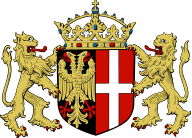 Neuss
NeussHistorisch
Former cemetery of the protestant community
The area in front of the Hamtor gate was already used as a burial ground for fallen soldiers of the besieging army during the Burgundian siege in 1474/75. In 1597, this former “Junkernfriedhof” (nobleman’s cemetery) was assigned as a burial ground to the Protestant community in Neuss, which was initially tolerated during the Counter Reformation. After the Protestants were finally expelled from the city around 1620, the unprotected cemetery increasingly fell into disrepair. The cemetery was only used again as a burial place for the Protestant soldiers and their relatives from 1642, after the city was occupied by Hessian troops at the end of the Thirty Years’ War. The oldest surviving tombstone of the Protestant community in Neuss also dates from this time. Today, it is located in the foyer of the Christ church.
With the departure of the Hessians in 1651, the Protestant community in Neuss also ceased to exist. A Protestant community wasn’t re-established in Neuss until 1804 during the French period. The chapel of the Marienberg monastery was the first church to be handed over to the community. Once again, the community used the old burial site in front of the Hamtor gate as a cemetery. The Protestant cemetery was also abandoned and the graves relocated with the establishment of the main cemetery on Rheydter Straße in 1873. In 1905/06, the Christ church was built on the site of the former cemetery. Some of the gravestones from the early days of the community that remained here were saved from decay in the 1980s and today are a reminder of the original use of the site.
Sources and texts: Neuss municipal archives
Graphic design: Cornelius Uerlichs
Translation: A.C.T. Fachübersetzungen GmbH
This plaque was donated by: Förderverein Christuskirche Neuss e. V.
